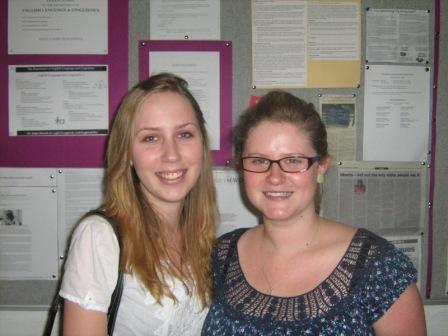
At the last Rhodes Linguistics Honours Research seminar for 2011, two students presented intriguing analyses of two very different types of text. Lynn Nowers compared pop music lyrics from 1960 with some from 2010 to find out how much they had changed in the way they portrayed gender relations. Then Tracy Beangstrom delved into the evaluative language used in real estate agency adverts, comparing two competing real estate agencies in Grahamstown. Both their studies revealed some fascinating (but not always reassuring) insights into trends in discourse today.
Lynn wanted to find out how pop music lyrics had reflected the massive societal changes in attitudes to gender over the past 50 years. In 1960, women were still fighting against being cast in the mould of the post-war domestic wife of the 1950s; nowadays, the Western world was supposed to be in a post-feminist phase in which men and women are regarded as equals. She took song lyrics from the Billboard Top 100 music charts at the end of 1960 and 2000, and analysed them using a combination of corpus linguistics and Critical Discourse Analysis. Lynn found that the 1960 lyrics and the 2010 lyrics were similar in that there was plenty of objectification of women in both. However, there was a great deal more description of women in the 2010 lyrics compared to those from 1960, along with a much more sexualized discourse around sex and gender.
Meanwhile, Tracy analysed 80 real estate advertisements from the Grocott’s Mail, a Grahamstown community newspaper, to find out how they set up interpersonal relationships between the two real estate agencies and prospective buyers, and how these relationships are affected by differences in the price of houses. She separated the advertisements into two categories: under R1,2 million and over R1,2 million in asking price. She used the APPRAISAL framework to analyse the nuances of the evaluative language used in these advertisements, adding two new categories to it: Exclusivity and Convenience. She found that, predictably, the advertisements for the more expensive houses tended to emphasize their exclusivity, while those for the less expensive houses tended to emphasize their convenience and security. Interestingly, the advertisements for the cheaper houses included more command sentences and rhetorical questions, urging the readers to come and take a look at the houses, while this was not necessary for the more expensive houses. It appears that the estate agents believe they can tell the lower-market buyers what to do, whereas they do not want to appear to be bossing around the upper-market buyers.
